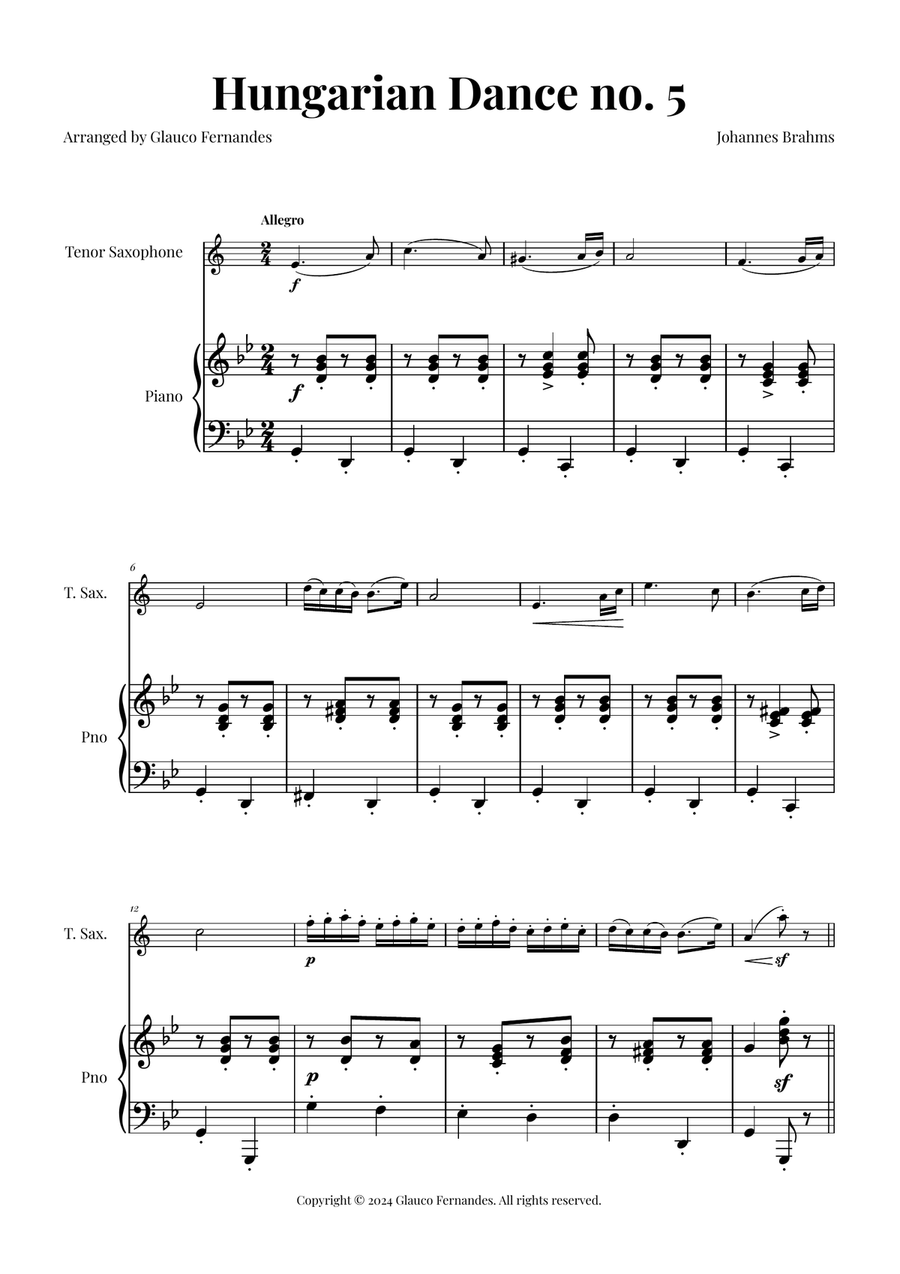Piano,Tenor Saxophone - Level 4 - Digital Download SKU: A0.1463926 Composed by Johannes Brahms. Arranged by Glauco Fernandes. Chamber,Classical,Romantic Period,Wedding. Score and part. 7 pages. Glauco Fernandes #1042636. Published by Glauco Fernandes (A0.1463926). Hungarian Dance No. 5 by Johannes Brahms - Exclusive ArrangementAre you passionate about music? We have the perfect offer for you! Presenting the exclusive sheet music arrangement of Hungarian Dance No. 5 by Johannes Brahms.Why choose our arrangement?This arrangement has been carefully crafted to capture the essence and beauty of the original piece, making it accessible for musicians of different levels. Every note is thoughtfully placed to provide the best musical experience.The sheet music is easy to follow, making it ideal for students learning to play, teachers seeking quality educational material, and professionals performing at events, including weddings. With precise instructions, you'll be able to perform the music confidently and effortlessly.Moreover, Hungarian Dance No. 5 is a versatile piece suitable for various occasions, from intimate concerts to larger events. Its captivating melody is sure to enchant any audience.Add Hungarian Dance No. 5 to your repertoire and captivate everyone with this timeless melody. Get your sheet music now!Purchase Sheet MusicTags: Hungarian Dance No. 5, Johannes Brahms, Arrangement, Sheet Music, Music Students, Music Teachers, Wedding Music, Classical Music, Brahms Hungarian Dance, Hungarian Dance Piano Sheet, Hungarian Dance Piano Sheet Music, Hungarian Dance Sheet Music Piano, Hungarian Dance Piano Sheet Music PDF, Classical Dance Music, Hungarian Dance Tutorial, Hungarian Dance Piano, Brahms Dance, Hungarian Dance Piano Solo.
